Some Asian cultures believe that humanity emerged from a bamboo stem. Malaysian legends have a similar story that describes a man who dreams of a beautiful woman while sleeping under a bamboo plant; he wakes up and breaks the bamboo stem, discovering the woman inside. In the Japanese myth, Taketori Monogatari, which means Tale of the Bamboo Cutter a princess from the moon emerges forth from a shining section of bamboo. In a Philippine creation myth, legend tells that the first man and the first woman each emerged from split bamboo stems on an island created after the battle of the elemental forces, Sky and Ocean. This is the focus of this article.
I get asked several questions each week at The Aswang Project. Many I can answer off the top of my head, but some involve further research. I may forward resources to the person asking, or if it is something that truly piques my interest, it will form an article. I’ve had a few very interesting questions regarding the Tagalog and Visayan myth of the first man and woman emerging from bamboo. Is it an animist belief? Is it Visayan or Tagalog? Are the names Malakas and Maganda traditional in the Tagalog story?
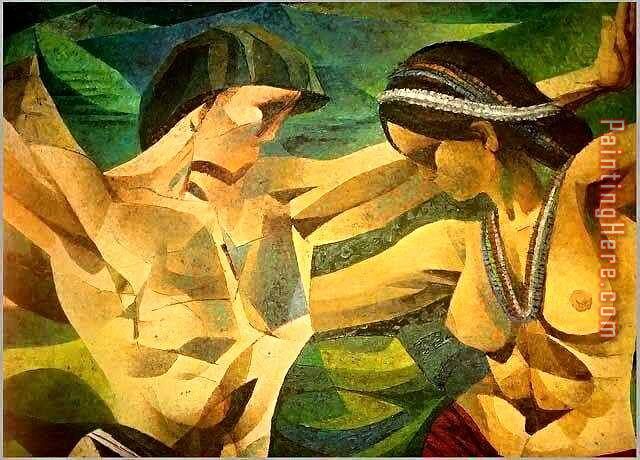
Human Creation in Philippine Myths
To “create” is commonly understood as “to produce something out of nothing.” For instance, when God said, “Let there be light”, and there was light, he created light out of nothing. Before that there was only darkness and no material existed out of which the light was made.
Creation out of nothing is called a “first creation,” and is found principally in the Judaeo-Christian-Muslim tradition. It requires as creator a perfectly omnipotent being, thoroughly self-sufficient and capable of producing his own creation independent of any other power.
Creation as conceived of by early Filipinos is more in the nature of a “second creation,” therefore the making of a particular object out of some underlying material.
We find this in many Philippine creation stories. The creator makes a specific object: the world, the tree or man. Before the creation, the world, the tree or man were nonexistent; a sub-stratum is used to form them — such as wood, clay or rock. In many traditions these substances were always there, from the very beginning. Creation simply formed them into specific objects.
In most Philippine myths, the creation of people, or their emergence into this world, follows immediately after the creation of the world. Philippine myths explain the origin of the first people on earth in three main ways:
(1) people came to earth from Heaven, or the Skyworld;
(2) the first man and woman emerged, fully formed, from two nodes of a piece of bamboo, from two stumps of the banana plant, hatched from two eggs of a bird, etc.; and
(3) they were created by a god and his helpers out of earth or some other material.
An Ifugao myth tells us that Kabigat of the Skyworld, wishing to populate the Earthworld, caused his two children Wigan and Bugan to be carried by a flood down to earth. He sent after them every thing they would possibly need—a granary with rice, rice wine jars, dogs, chickens, pigs, cats, etc. The brother and sister eventually married, had children, and populated the earth. In a Visayan myth, we are likewise told that in the beginning, no one lived on earth. Then a hunter accidentally bore a hole on the ground of heaven and, looking through the hole, discovered the Earth. He and his companions descended to Earth by means of a rope of birds’ feathers and lived there. Only a fat woman who could not get through the hole was left in heaven (literally mooning us).
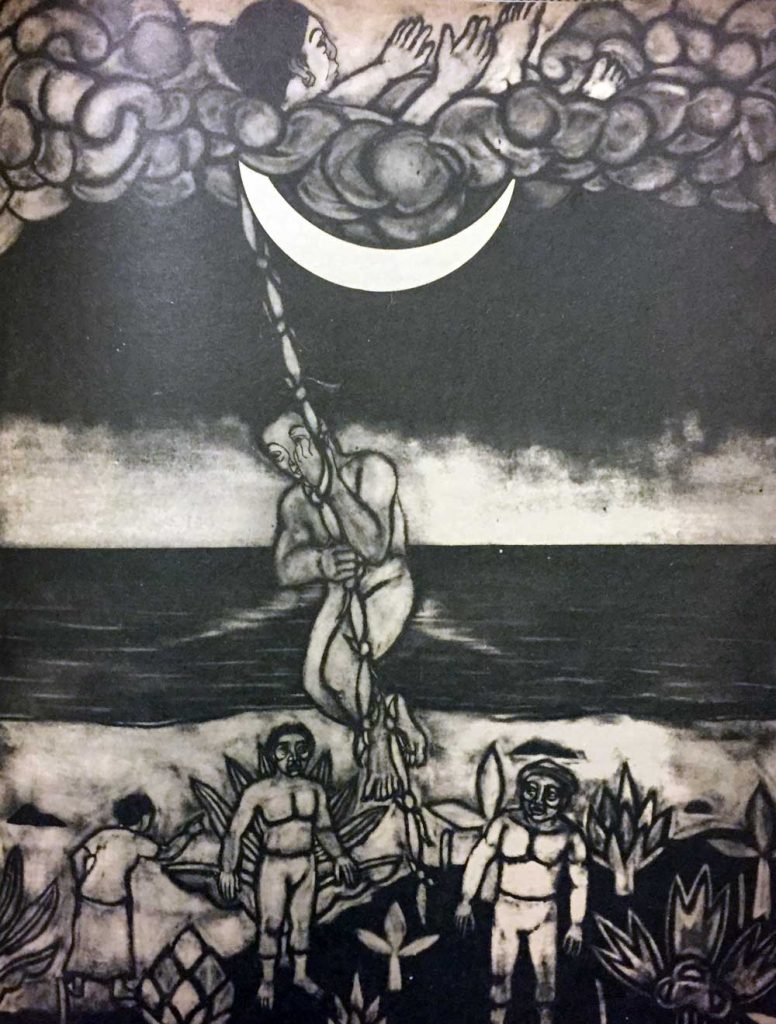
In a Bikol myth the first man and woman sprang from two hairs that grew on the cut arm of the god Bulan. In a Mandaya myth, the first man and woman came from two eggs of the limokon bird (a kind of dove). A Sulu Moro story combines the egg motif and the bamboo motif, by saying that the first man came from the egg of a bird. He later found his mate inside the bamboo.
In popularized myths on the creation of the first man and woman, it is usually the man who is created first and then the woman is created to keep man company. When mentioned in Philippine myth, this may be due to Catholic/ Muslim influence or, in many cases, simply a reflection of the roles gender played in pre-colonial times. In an Igorot myth it was the woman who was created first and only when she found it hard to catch a pig for food did Kabunian create a man who could help her. This likely reflects the generations of the traditional gender roles in that tribe.
Looking at stories of the first man and woman from various animist and polytheistic beliefs around the world, there are striking similarities – of which would take an anthology to account. I would certainly feel confident saying these myths predate organized religion and were simply incorporated into them if similarities are found. These incorporations have then been syncretized into previously held animist beliefs, leaving the menagerie of human creations myths around the archipelago that have been documented through the centuries.
In order to understand the Tagalog myth, we must first look at its Visayan counterpart.
Visayan, The Man and Woman of the Bamboo:
Relacion de las Yslas Filipinas:
The first account of this myth was documented by Miguel de Loarca in 1582. It outlines the beliefs of the Hiligaynon (particularly those on Panay and Negros at the time).
Those of the coast, called Yligueynes (Hiligaynon), are of the opinion that heaven and earth had no beginning and that there were two gods , one of these called Captan and the other Maguayen and that the land breeze and he sea breeze were married and that the land breeze brought fo1ih a reed and that reed was planted by the god Captan and when it was frown, broke, and there were made from itself two sections which became a man and a woman the man was called Sicalac from which they call all men lalac and the woman they called Sicavay from which they afterward called the woman Babayes. The man told the woman that they should get married because there were no other people in the world; she said that she did not want to because they were brother and sister born of the same reed and there had not been more than one knot between them and that she did not want to marry him for being her brother. Finally they agreed to go and ask advice of the tunas (toninas) of the sea and the doves (palomas) in the air and lastly they went to seek the advice of the shaker of the earth (temblor de la tierra ), who said that it was necessary that they marry so that the world might be peopled and they got married and the first son they had was called Sibo and then a daughter named Samar and these two children had a daughter called Lupluban and this married a son of the first couple called Pandaguan … (who) was the first to invent fish corrals for fishing in the sea and the first time, he caught a shark and brought it ashore thinking that it would not die and when brought ashore it died and upon seeing it dead Pandaguan stared to lament and cry over the shark and to complain to the gods about the death of one when up to that time no one had died …
. . . The mountaineers , who called Tinggian … believe that in the beginning were only the sea and the sky; and that one day a kite, having no place where to alight, determined to set the sea against the sky. Accordingly, the sea declared war against the sky, and threw her waters upward. The sky, seeing this, made a treaty of peace with the sea. Afterward, to avenge himself upon her for having dared to assert herself, they say that he showered upon the sea all the islands of the archipelago, in order to subdue her; and that the sea ran to and fro without being able to rise again .. . Then they relate also the story of the reed; but they say that the kite pecked the reed, and the aforesaid man and woman came out. . . -Miguel de Loarca, trans. A.B. , Llopis Repotente
The Boxer Codex:
This myth was also documented in The Boxer Codex and follows the same cosmogony documented by Loarca. The Boxer Codex, sometimes known as the Manila Manuscript, is a manuscript written c. 1590, which contains illustrations of ethnic groups in the Philippines, ethnic groups across Southeast Asia, East Asia, and Micronesia at the time of their initial contact with the Spaniards with additional Taoist mythological deities and demons, and both real and mythological birds and animals copied from popular Chinese texts and books in circulation at the time.

It is believed that the original owner of the manuscript was Luis Pérez Dasmariñas, son of Governor General Gómez Pérez Dasmariñas, who was killed in 1593 by Sangleys or Chinese living in the Philippines. Luis succeeded his father in office as Governor-General of the Philippines. Since Spanish colonial governors were required to submit written reports on the territories they governed, it is likely that the manuscript was written under the orders of the governor.
The manuscript’s earliest known modern owner was Lord Ilchester. The codex was among what remained in his collection when his estate, Holland House in London, suffered from direct German shelling on September 27, 1940 during The Blitz. The manuscript was auctioned in 1947 and came into the possession of Professor Charles Ralph Boxer, an authority on the Far East, and after whom the document is named. It is now owned by the Lilly Library at Indiana University.
This account is prefaced in the manuscript by the statement, “The Bisayans have a belief about the origin and beginning of the world, which is something ridiculous and laughable and full of a thousand inconsistencies.”
It is not entirely clear which area of the Visayas this myth was documented.
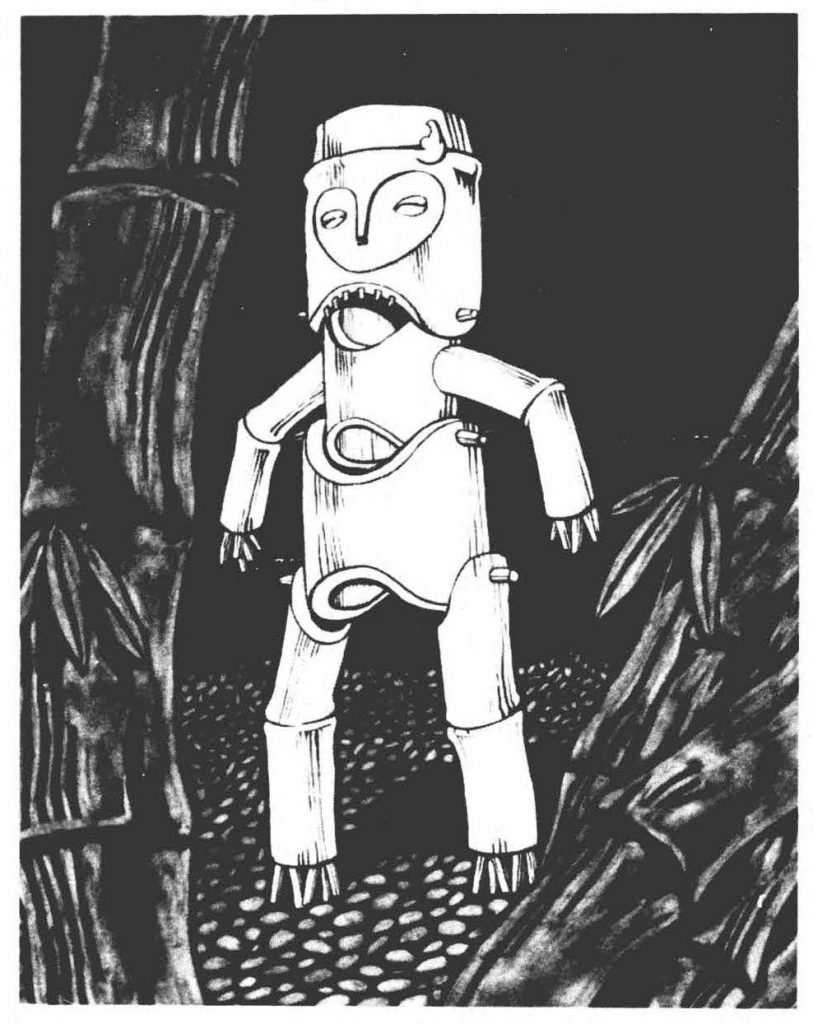
In the beginning of time it is said, there was only the sky and there was only the sea. And a bird of prey flew between the sky and the sea without finding a place to rest. For there was no place to alight in the sky and nowhere in the sea.
And tired of flying continuously, the bird thought to create a quarrel between the sky and the sea. Flying upwards, the bird said to the sky: The sea has said that it wishes to rise and submerge you with water. And the sky said: If it does so, that will be unfortunate, for I will hurl upon it rocks and islands. I will drop into the sea so many rocks and islands that it will have to go around these and there will be too little space for the waves to rise high enough to drown me.
This the bird reported at once to the sea, who became so angry that it started throwing its waves up with such force and determination that the sky began to fear. It raised itself up a little higher to keep from being submerged. Do you see what it is trying to do? said the bird, flying from the sea to the sky. Whereupon the aroused sea redoubled its vigor and rose up to even greater heights. And the sky, no longer able to contain itself, began to throw down many rocks and many islands which thundered to the bottom of the sea. With their weight the sea subsided to its former level, for with the rocks and the islands, it could no longer rise to any great height.
The bird of prey gleefully flew down, finding rest at last from its continuous and wearying flight, upon a bit of earth.
While the bird rested on the island, a length of bamboo with two nodes was washed to the shore by the surf, roughly hitting the feet of the tired bird. The bird moved farther down the shore to avoid it but again the bamboo was washed ashore to where the bird was again hitting its feet. Thereupon the maddened bird pounced upon the bamboo and began to peck hard at the nodes.
The strength of the pecking split open the piece of bamboo. And, lo and behold, a brown sturdy creature was revealed sleeping in the hollow of the first node. And from the other node, a creature with supple limbs and flowing hair stepped down. And they stood on the vast and quiet island — the first man and woman upon the world.
The man (whose name was Calgue), approached the woman (whose name was Cabaye). He said: Now surely we must be wedded together so as to multiply and fill the earth with children. But the woman appeared stricken at this proposal. How can we marry, said she, when we are brother and sister, having come, as you can see, from the same bamboo. If we marry we shall be punished by our gods Maguay and Malaon.
Do not be afraid, the man told the first woman. It is all right for us to marry. But if you have any doubt, let us ask the fish in the sea. And agreeing on this, they walked to the edge of the sea and asked the silvery tunnies who replied that it was all right, they had also married, brothers and sisters together, and had multiplied greatly, as the man and woman could see, and they had not been punished by the gods for it.
But still the woman did not want to marry her brother for fear of the wrath of their gods. If you are still uncertain, said the man. then let us see what the birds have to say And they walked into the cool of the forest to ask the opinion of the doves resting in the trees. And the doves gave the same reply as the fishes, saying that it was good that the man and the woman should marry and beget children, for they themselves had done so, for which reason they had multiplied so much on earth, and the gods had not been displeased.
But still the woman would not marry her brother for fear of their gods. She said if she was to marry, it would only be after asking some god of their own, and if he said yes, then they would marry, but not before. So the first man agreed that they should ask their own god Linok who was the god of the earthquake. And Linok replied that it was all right, it was understandable, it was proper that they should marry in order to enlarge the world with their children, and never would the gods rage.
And so at last the woman was convinced, because the fishes and the birds and Linok, the god of the earthquake had said so. And the first man and woman were wedded by Linok. And they were happy, it is said.
A little later, the woman became pregnant, and gave birth all at one time to a large family of boys and girls. These children, however, grew up to be idlers, doing nothing but eating and sleeping all day. They did nothing worthwhile to help in their sustenance, and much less did they help their parents to earn a living. The time came when the children could no longer be supported, but still they never would do a stroke of work. Thereupon the parents became enraged and decided to throw the children out of their house.
The father took a fat stick, and on entering the house and seeing them all still playing and idling, began to shout: Get out of this house or I will beat you to death, each and everyone! And the children scampered away in terror, never having seen the father so angry.
Some of the children fled outside of the house of their father; others ran into the bedroom, some stayed in the living room though cowering. Still others went to the kitchen, hiding themselves among the unwashed pots and the chimneys.
And so it came about that from those who entered the bedroom came descendants who were lords and chiefs, and therefore respected. And from those who stayed in the living room came the warriors and nobles who were free and paid nothing. And from those who hid behind the walls of the house descended the slaves. Those who fled to the kitchen and hid among the sooty pots spawned the Negritos, who live in the mountains of the Philippines. As for those who left their father’s house and never returned nor were ever heard from, came all the other peoples in the world.
And this is the story of the creation of the earth and the beginning of mankind according to the Bisaya.
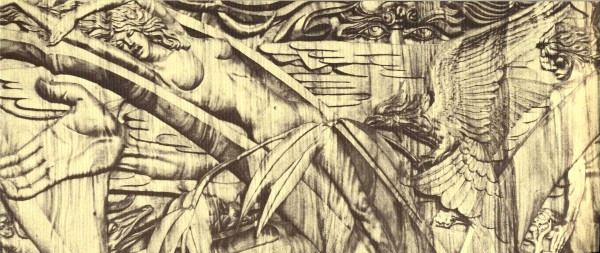
The Tagalog Creation Story:
Philippine Folk Tales
The original documentation of the Tagalog myth appeared in Mabel Cook Cole’s 1916 Philippine Folk Tales. It is strikingly similar to the Visayan story, so it is unclear if it was misdocumented, mistold, or misinterpreted as a Tagalog tale. Or perhaps, the Tagalogs had their own version that had yet to be documented. Mabel Cook Cole prefaces this section of myths noting the influences from Christianity, western literature, and other native ideas.
When the world first began there was no land, but only the sea and the sky, and between them was a kite. One day the bird which had nowhere to light grew tired of flying about, so she stirred up the sea until it threw its waters against the sky. The sky, in order to restrain the sea, showered upon it many islands until it could no longer rise, but ran back and forth. Then the sky ordered the kite to light on one of the islands to build her nest, and to leave the sea and the sky in peace.
Now at this time the land breeze and the sea breeze were married, and they had a child which was a bamboo. One day when this bamboo was floating about on the water, it struck the feet of the kite which was on the beach. The bird, angry that anything should strike it, pecked at the bamboo, and out of one section came a man and from the other a woman.
Then the earthquake called on all the birds and fish to see what should be done with these two, and it was decided that they should marry. Many children were born to the couple, and from them came all the different races of people.
After a while the parents grew very tired of having so many idle and useless children around, and they wished to be rid of them, but they knew of no place to send them to. Time went on and the children became so numerous that the parents enjoyed no peace. One day, in desperation, the father seized a stick and began beating them on all sides.
This so frightened the children that they fled in different directions, seeking hidden rooms in the house—some concealed themselves in the walls, some ran outside, while others hid in the fireplace, and several fled to the sea.
Now it happened that those who went into the hidden rooms of the house later became the chiefs of the Islands; and those who concealed themselves in the walls became slaves. Those who ran outside were free men; and those who hid in the fireplace became negroes; while those who fled to the sea were gone many years, and when their children came back they were the white people.

Bathala, the chief god of the Tagalogs, was identified with the tigmamanukin, a small bird. In his Relacion , Fr. Pedro Chirino wrote: “The Tagalogs adored a blue bird as large as a thrush, and called it Bathala , which was among them a term of divinity”; to which Blair and Robertson added in a note: “The Tagals also called this bird tigmamanukin; its scientific name is Irene cyanogastra Meyer.” There is a very real possibility that the myth and the motifs in the Tagalog first man and woman myth were genuinely spread. The opposite is also possible given the almost verbatim account.
Malakas and Maganda
This is where things get very suspect. The myth is essentially the same as what Mabel Cook Cole documented, but the first man and woman have been given the names Malakas and Maganda. What becomes even more curious is that the following myth is often sourced from Cole’s documentation even though the names do not appear there.
In the beginning there was only sky, sea, and a single bird. The bird grew tired and, while looking for a place to rest, stirred up the sea until its waters reached the sky. The sky then showered the sea with islands in order to calm it down, and told the bird to pick an island to build its nest there.
One day, the bird was struck by a bamboo pole, the child of the land and sea breezes. Annoyed the bird struck at the nodes of the bamboo until it split. From one half a man, Malakas (“strong one”) emerged and from the other half a woman, Maganda (“beautiful one”). Then the earthquake called on all the birds and fish to see what should be done with these two, and it was decided that they should marry. They had a great number of children.
One day the couple grew tired of the offspring’s idleness and wanted to get rid of them. Malakas grabbed a stick and started beating their children. This scared them so much that they fled to all directions, seeking hidden rooms in the house. Some concealed themselves in the walls, some ran outside, while others hid in the fireplace, and several fled to the sea.
Those who went into the hidden rooms of the house later became the chiefs of the islands. Those who concealed themselves in the walls became slaves, while those who ran outside were free men. The children who hid in the fireplace became dark-skinned; while those who fled to the sea were gone many years, and when their children came back they had white skins.
MALAKAS and MAGANDA were characters in the play “Malakas and Maganda”, by Antonio O. Bayot featured in “Prize Winning Plays of the Arena Theatre of the Philippines”, 1956. But the duo appeared in literature as early as 1931 in Jose Garcia Villa’s “Malakas: A Story of Old-time Philippines.” These writings have nothing to do with the creation myth, but the character names were very popular in Philippine plays and literature between this time. From what I can find, the first documentation of Malakas and Maganda in the creation myth came from Francisco B. Icasiano, known as “Mang Kiko,” who wrote familiar, often humorous essays on the rural life in his column “From My Nipa Hut,” later collected as a book entitled Horizons From My Nipa Hut, 1941. The essay titled “Barrio Synthesis” recounts this tale (including the names Malakas and Maganda) and has been used in educational textbooks for decades. It was only after this that the Tagalog myth began including these character names, and was then immortalized with the amazing artistic interpretation by Nestor Redondo. as far as I can find, the names Malakas & Maganda do not appear in any reliable source for Philippine myth and folklore prior to this date.
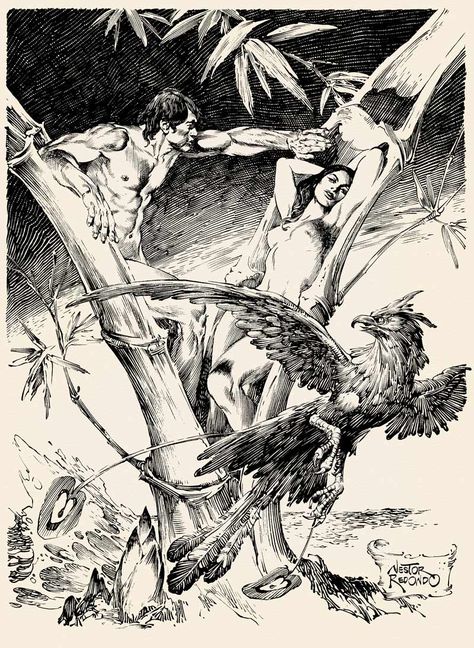
The names attached to this myth became even more popularized when Ferdinand Marcos had Imelda commission paintings for Malacanang Palace. The doors leading to the Grand Staircase were said to depict the Philippine legend of ‘Malakas ‘ ( Strong ) and ‘ Maganda ‘ ( Beautiful ) , the first Filipino man and woman who emerged from a large bamboo stalk. In an egotistic and propogandian gesture, Malakas was portrayed as Ferdinand, and Maganda as Imelda.

In Conclusion:
The myth of the ‘man and woman from bamboo’ is certainly a traditional Visayan myth from the time of Spanish contact. It is not beyond the realm of possibility that the Tagalogs shared a very similar myth, although the original documentation (Cole) clearly gave guidance as to our acceptance of authenticity to the folktales in that particular chapter. What I can say with almost complete certainty is that the names of the first man and woman, Malakas and Maganda, were included in a 1941 retelling of the myth to reflect popular literature and poetry of the time. The use of that essay in education solidified it into popular opinion.
SOURCES:
Francisco R. Demetrio S.J. , Myths and Symbols, Philippines (National Bookstore Inc. 1978)
Farrin Chwalkowski, Symbols in Arts, Religion and Culture: The Soul of Nature (Cambridge Scholars Publishing, 2016)
Damiana Eugenio, Philippine Folk Literature: The Myths, (UP Press, 2001)
Miguel de Loarca, Relacion de las Yslas Filipinas, Arevalo, June, 1582
Mabel Cook Cole, Philippine Folk Tales (Chicago: A. C. McClurg and Company, 1916)
Maximo Ramos, The Creation of Man in Philippine Myths, (?)
Garcia Villa, Jose. “Malakas: A Story of Old-time Philippines.” New Mexico Quarterly 1, 2 (1931). https://digitalrepository.unm.edu/ nmq/vol1/iss2/13
Francisco B. Icasiano, Horizons From My Nipa Hut, (Nipa Hut Publishing, 1941)
ALSO READ: Tungkung Langit & Alunsina | The ‘Other’ Visayan Creation Story
Jordan Clark is a Canadian born descendant of Scottish immigrants living on the homelands of the Lekwungen speaking peoples. His interest in Philippine myth and folklore began in 2004. Finding it difficult to track down resources on the topic, he founded The Aswang Project in 2006. Shortly after, he embarked on a 5 year journey, along with producing partner Cheryl Anne del Rosario, to make the 2011 feature length documentary THE ASWANG PHENOMENON – an exploration of the aswang myth and its effects on Philippine society. In 2015 he directed “The Creatures of Philippine Mythology” web-series, which features 3 folkloric beings from the Philippines – the TIKBALANG, KAPRE and BAKUNAWA. Episodes are available to watch on YouTube. Jordan recently oversaw the editing for the English language release of Ferdinand Blumentritt’s DICCIONARIO MITOLÓGICO DE FILIPINAS (Dictionary of Philippine Mythology) and is working on two more releases with fellow creators scheduled for release later this year. When his nose isn’t in a book, he spends time with his amazing Filipina wife of 20 years and their smart and wonderful teenaged daughter.


